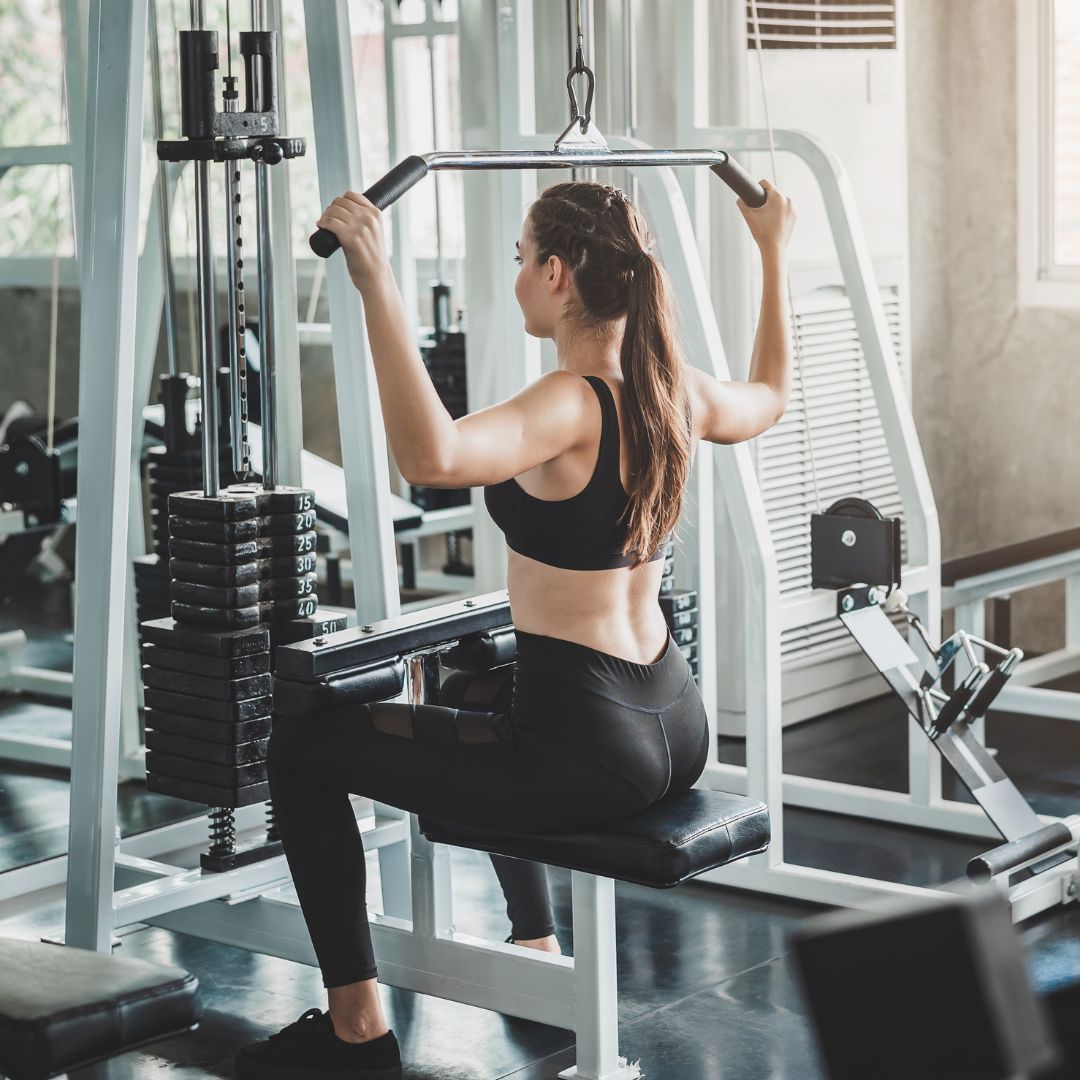Muscle Group of the Week: Latissimus Dorsi

The latissimus dorsi, also known as the lats or the latissimus, is an expansive muscle covering almost every back muscle in the body. This wide spreading structure covers most of the superficial layer of the extrinsic back muscles; the other parts of this layer include the rhomboids, levator scapulae, and trapezius.
What Does it Do?
The latissimus dorsi is a climbing muscle. Collaborating with your pectoralis major, the lats are responsible for pulling the rest of your body upward. When you’ve got a rock to climb, you’ll be engaging the lats!
This muscle has other jobs too though! Sometimes the latissimus dorsi is considered the fifth rotator cuff muscle alongside the better recognized supraspinatus, infraspinatus, subscapularis, and teres minor. Activities such as swimming and rowing activate the arm-rotating power of the latissimus!
Through the thoracolumbar fascia, the lats attach to the lumbar and sacral vertebrae from T6-S5, the posterior iliac crest, and the lower three to four ribs. At this attachment site, the latissimus dorsi acts as a respiratory accessory muscle.
- At Shoulder Joint
- Internal arm rotation
- Arm adduction
- Arm extension
- At Thoracolumbar Fascia Attachments
- Respiration assistance
Making it Strong
If you’re going to accomplish anything that pulls your trunk upwards and forwards with the assistance of your shoulders, you’ll want strong lats! Here are some of the best lat strengthening exercises below!

Pull Up

Pull Down

Barbell Rows

Lat Pulls with Band
The Best Stretches
Before you head out to climb that rock, you’ll want that latissimus to be flexible! After your pull downs and barbell rows, you’ll want to stretch out the back and shoulders to reduce your risk of injury.

Child’s Pose

Outstretched Hand Clasp and Side Lean

Overhead Arm Stretch

Hanging Back Stretch
Keeping it Happy
Body work focusing on the upper half of the body will be most beneficial to tight lats. Your therapist can use a combination of deep tissue massage, sports massage, and trigger point therapy to loosen the adhesions in the low to mid back, shoulders, and surrounding muscular tissues. It’s also important to remove knots from the pecs, as they play as much of a role in lifting the trunk as the lats.
After releasing the lats, the next step should be strengthening the antagonistic muscle group. As the lats adduct, extend, and internally rotate the upper arm, the deltoids are executing the opposite actions in the same area – abducting, flexing, and externally rotating. A locked-short latissimus will cause overstretching and weakening in the deltoids, which means these superficial shoulder muscles could use some PNF following massage.
Now You Know!
Make the back and shoulders strong and flexible! A balanced latissimus will keep the rotator cuff optimally functioning, as well as contribute to a healthy breathing pattern!
Next time, we’ll talk about your abdominal oblique muscles!

Katrina Jenkins
Author, Licensed Massage Therapist
Katrina Jenkins graduated from Towson University in 2013 with a Bachelor’s Degree in Health Science and worked as a nurse’s aide briefly before pursuing her true passion. She graduated from the Massage Therapy Institute of Colorado in April 2016 with honors and completed the Touch of Healers Scholarship Program the following summer. She has been a part of the Moyer Total Wellness Team since the summer of 2017.
Resources
Asher, A. (2012). The Anatomy of the Latissimus Dorsi Muscle. [online] Verywell Health. Available at: https://www.verywellhealth.com/latissimus-dorsi-muscle-anatomy-297067.
Physiopedia. (n.d.). Latissimus Dorsi Muscle. [online] Available at: https://www.physio-pedia.com/Latissimus_Dorsi_Muscle.
Smith, M. (2013). Kenhub. [online] Kenhub. Available at: https://www.kenhub.com/en/library/anatomy/latissimus-dorsi-muscle.
Waehner, P. (2016). 16 Best Latissimus Dorsi Exercises. [online] Verywell Fit. Available at: https://www.verywellfit.com/great-mid-back-lats-exercises-1231482.
Photo Credit
Canva by A’s Images
Canva by malhrovitz
Canva by takoburito
Canva by interstid
Canva by Lunamarina
Canva by Rido
Canva by FatCamera
Canva by Jay_Zynism
Canva by DragonImages
Canva by mihailomilovanovic
Canva by microgen


